7. Wings Of Desire (Wim Wenders, 1987)
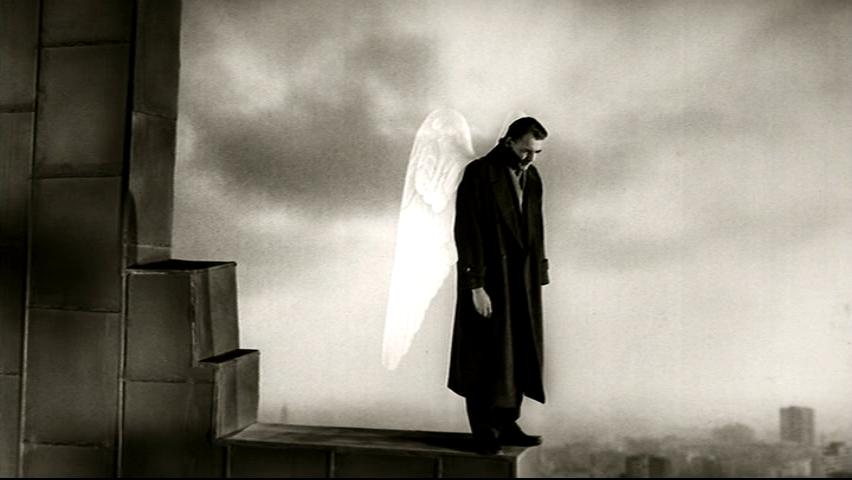
Wim Wenders is not just a filmmaker, he is a poet. Each one of his films is impregnated with a beautiful understanding of the human condition. In “Der Himmel über Berlin” we follow two angels, played by Bruno Ganz and Otto Sander, who wander around the skies of Berlin following the people in their daily life, overseeing their actions and accompanying them with total empathy; they understand our pain but can do nothing to help us, they are there just to watch. They witness all the drama, our moments of excitement, our worries, our suicides.
Eventually, one of the angels, played by Bruno Ganz, gets tired of his role as a silent eye and falls in love with a circus performer. He then becomes a human, leaving his infinite wisdom and knowledge in order to experience life as it comes just like all of us do, at the expense of the stream of emotions and feelings we cannot escape from.
He becomes another element of the city and is integrated into the strange dynamics of being human. Wenders wrote in “Wings of Desire” a love letter to the human race and everything that is beautiful and worthy in all of us.
8. Los Olvidados (Luis Buñuel, 1950)
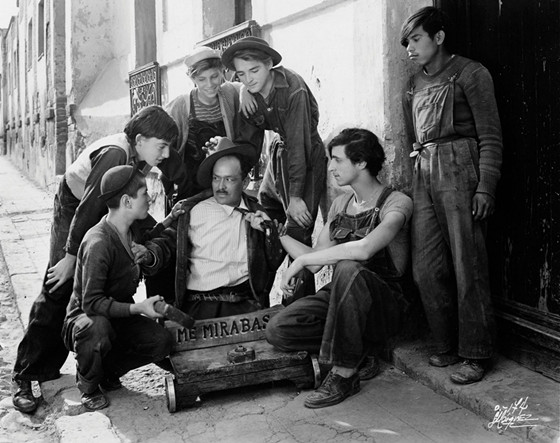
In Luis Buñuel’s masterpiece “Los Olvidados”, we get to know the slums of México City and the lives of the homeless youth. The characters in the film are very rich and varied: Ojitos, a child who is left alone by his parents in a farmer’s market and is then adopted by a blind man; El Jaibo, who is the grown-up leader of a gang of children; and Pedro, a member of the gang who fled home and only returns to eat. These are the three characters the film focuses on.
While the film portrays the lives of the poor children of México City, it could easily be set in any other city in the world with the same effect. In the 1950s, México was experiencing an unseen economical development, but such progress is never equal to everybody and there are always outcasts.
In “Los Olvidados” there are people driving around in fancy cars, there are huge buildings in construction, but the future for the youth seems hopeless and grim. It is all moral decay, with crime and violence all around. With a neo-realistic approach, Buñuel makes a strong social commentary, telling us the story of those who we see every day but who are nonexistent to our eyes, the outcasts who couldn’t find a place in society and now roam lost and forgotten…
9. Alphaville (Jean-Luc Godard, 1965)
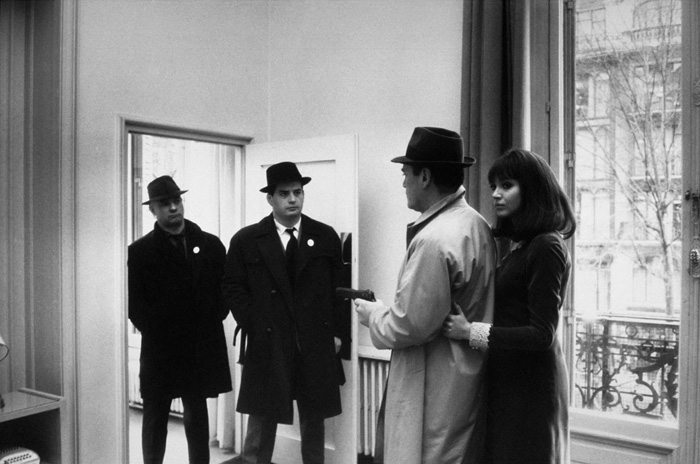
What happens to the human spirit when we forget about it? Godard asks this question in “Alphaville”, a sci-fi film where the evil guy is Alpha-60, an artificial intelligence that runs the city. Lemmy, the protagonist of the film, is sent to Alphaville to rescue a missing person and to eliminate Alpha-60. At its core, “Alphaville” is a film that rebels against the values praised by modern society: productivity, rationalism and industrialization. It instead re-vindicates the place of poetry through Paul Eluard’s “La Capitale de la Douleur”.
“Alphaville” is the same high-tech Paris we saw in “Playtime”, only portrayed under a different light. It is obscure and dystopian, there are words banned that are systematically erased from the dictionary, and people behave like machines, completely devoid of human spontaneity. Alpha-60 runs a logical dictatorship, outlawing emotion and individuality. The film acts as a satire of a civilization that hopes to relegate everything to machines and that has no consideration to that which makes us human.
10. Drive (Nicolas Winding-Refn, 2011)
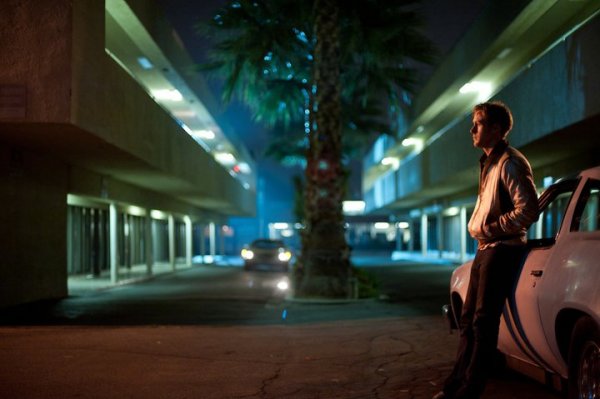
Pretty much like in “Taxi Driver”, a central element in “Drive” is the fight to save the smallest fragment of purity that remains untouched when everything around seems to be hopeless and inhuman. Ryan Gosling plays The Driver, a gifted driver that works during the day as a stunt double and at night as a getaway driver for anybody who needs it and can afford it.
The Driver falls in love with his neighbor Irene (Carey Mulligan) and her son Benicio, and when Irene’s husband, played by Oscar Isaac, comes out of jail with protection debts and death threats, he decides to help him in a robbery. However, things go wrong, and the driver has to go on a bloody rampage to protect Irene and Benicio.
What we see in this film is that life has no meaning without something we value enough as to put our own lives in harm’s way in order to save it from corruption. Roaming around LA’s streets, The Driver has found that something in Irene and Benicio, whose innocence he goes on to protect at the expense of his own life.
11. Hiroshima, Mon Amour (Alain Resnais, 1959)
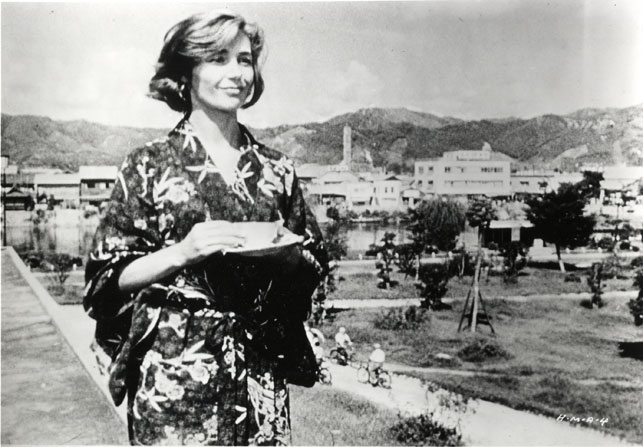
“Hiroshima, Mon Amour” tells the story of the relationship between a man and a woman, but it also tell us the story of Hiroshima and Nevers, two cities wounded by World War II. The film starts with one the most poetical sequences in film history, as we see the two lovers caught in an embrace, their skins covered in wet sand as if they were made out of the earth itself. We see scenes of destruction and pain, as the camera slides through the streets of Hiroshima and we hear them talking about memory, about death, about love.
Cities have history, and that history has a strong impact in the way it grows and develops, or in the way that it decays and dies. Just like our lives are shaped by our past, the cities are a reflection of everything that has happened to them; their wounds are our wounds and in this way the yearning of two lovers becomes the yearning of two fragmented cities, and the frail and temporary encounter of the two lovers is transformed into a conversation between two cities that know about suffering and sorrow.
12. Lost in Translation (Sofia Coppola, 2003)
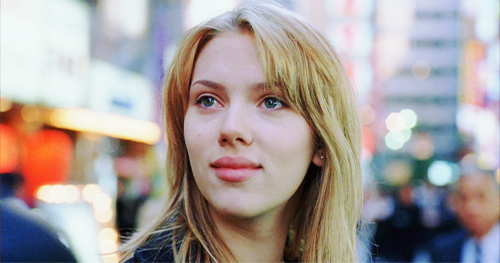
“Lost in Translation”, directed by Sofia Coppola, is a film about the postmodern feeling of isolation so common of cosmopolitan landscapes. Scarlett Johansson plays a young newlywed philosophy mayor who goes to Tokyo with her husband, a rock band photographer. Lost in the immense city, she wanders around in a confusing whirlwind of people and unknown places, until she meets a faded movie star named Bob Harris, played by the always charismatic Bill Murray.
The city is the only place where you can feel completely alone while you are surrounded by millions of people. In a place filled with unknown symbols and unknown languages, they both find in each other a safe haven from the incomprehensible and confusing exterior, and they are able to communicate with each other and in this way palliate the dullness and insignificance of life.
13. Safety Last! (Fred Newmeyer, 1923)
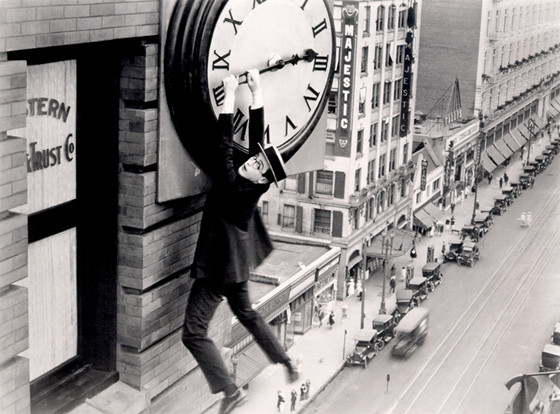
The things we do for money, right? It’s impossible to live without it and in the right amounts it can make the best and the worst of us go out to the light. We all want money and we want it fast and easy. In “Safety Last!”, Fred Newmeyer’s hysterical comedy, Harold Lloyd climbs up a building from the outside in order to attract people to the shop he works at and to get the money offered by his employer to finally be able to marry his beloved.
“Safety Last!” is about the importance of money in our lives and the weight it has in our happiness. If in the past of mankind our chances to survive were determined by our physical strength and our ability to craft weapons for hunting, it is now determined by our economical success, mostly in big cities where everything can be bought and sold.
It has changed the way human relations work. We have to get money no matter what, it doesn’t matter if it’s by going to a 9 to 5 job on weekdays or by climbing the outside of a building for publicity.